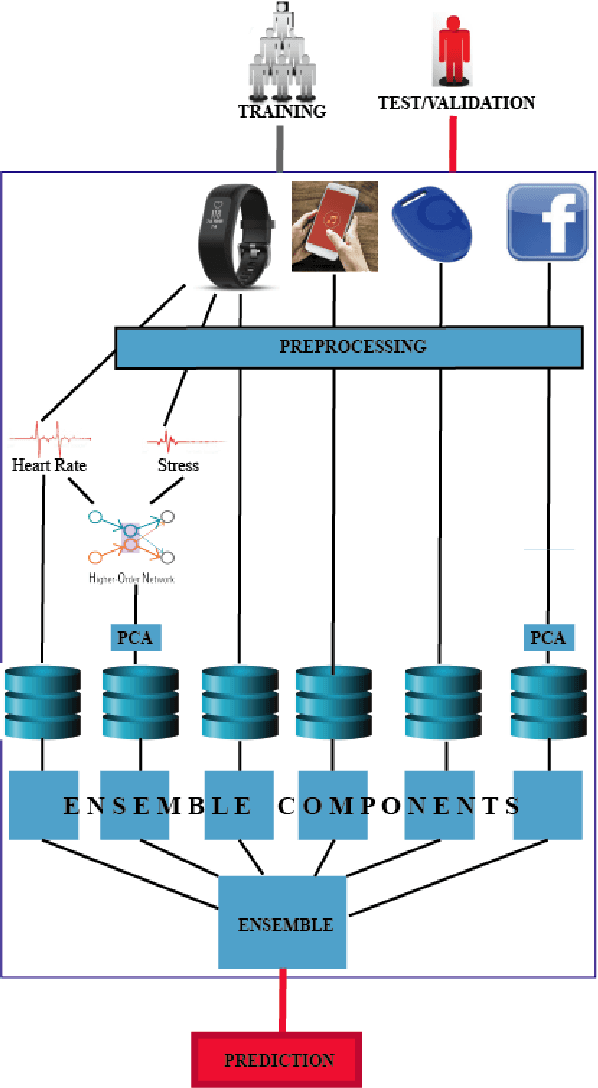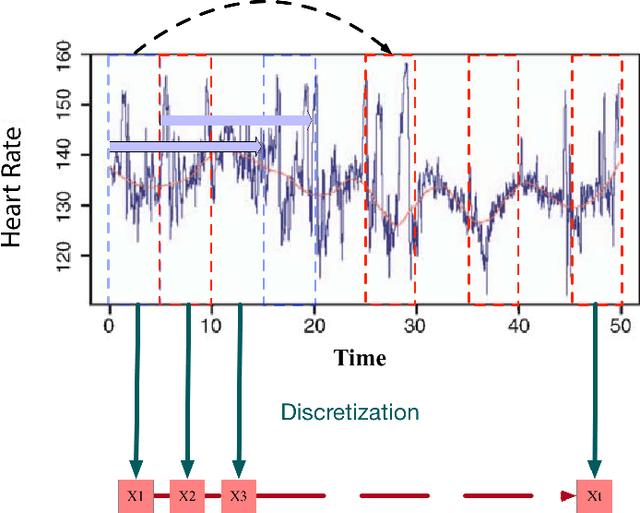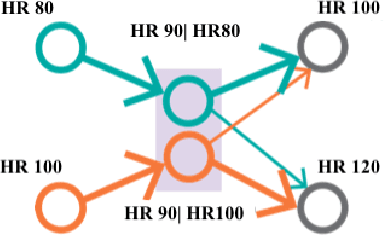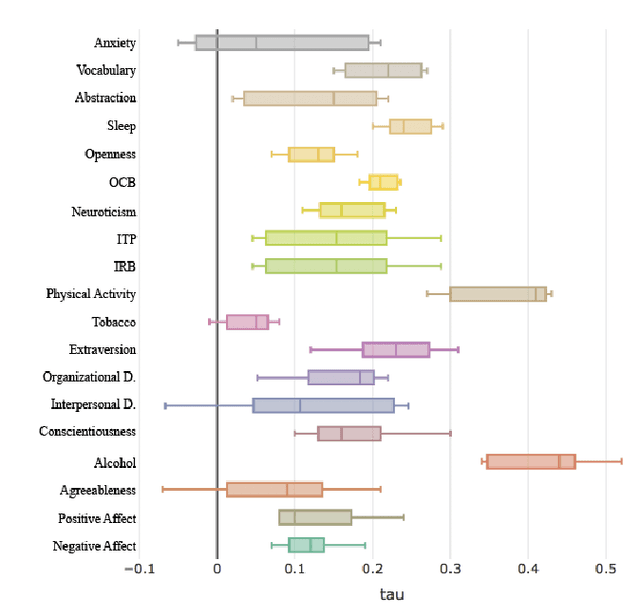Shayan Mirjafari
MoodCapture: Depression Detection Using In-the-Wild Smartphone Images
Feb 25, 2024Abstract:MoodCapture presents a novel approach that assesses depression based on images automatically captured from the front-facing camera of smartphones as people go about their daily lives. We collect over 125,000 photos in the wild from N=177 participants diagnosed with major depressive disorder for 90 days. Images are captured naturalistically while participants respond to the PHQ-8 depression survey question: \textit{``I have felt down, depressed, or hopeless''}. Our analysis explores important image attributes, such as angle, dominant colors, location, objects, and lighting. We show that a random forest trained with face landmarks can classify samples as depressed or non-depressed and predict raw PHQ-8 scores effectively. Our post-hoc analysis provides several insights through an ablation study, feature importance analysis, and bias assessment. Importantly, we evaluate user concerns about using MoodCapture to detect depression based on sharing photos, providing critical insights into privacy concerns that inform the future design of in-the-wild image-based mental health assessment tools.
Using Mobile Data and Deep Models to Assess Auditory Verbal Hallucinations
Apr 20, 2023



Abstract:Hallucination is an apparent perception in the absence of real external sensory stimuli. An auditory hallucination is a perception of hearing sounds that are not real. A common form of auditory hallucination is hearing voices in the absence of any speakers which is known as Auditory Verbal Hallucination (AVH). AVH is fragments of the mind's creation that mostly occur in people diagnosed with mental illnesses such as bipolar disorder and schizophrenia. Assessing the valence of hallucinated voices (i.e., how negative or positive voices are) can help measure the severity of a mental illness. We study N=435 individuals, who experience hearing voices, to assess auditory verbal hallucination. Participants report the valence of voices they hear four times a day for a month through ecological momentary assessments with questions that have four answering scales from ``not at all'' to ``extremely''. We collect these self-reports as the valence supervision of AVH events via a mobile application. Using the application, participants also record audio diaries to describe the content of hallucinated voices verbally. In addition, we passively collect mobile sensing data as contextual signals. We then experiment with how predictive these linguistic and contextual cues from the audio diary and mobile sensing data are of an auditory verbal hallucination event. Finally, using transfer learning and data fusion techniques, we train a neural net model that predicts the valance of AVH with a performance of 54\% top-1 and 72\% top-2 F1 score.
Jointly Predicting Job Performance, Personality, Cognitive Ability, Affect, and Well-Being
Jun 10, 2020



Abstract:Assessment of job performance, personalized health and psychometric measures are domains where data-driven and ubiquitous computing exhibits the potential of a profound impact in the future. Existing techniques use data extracted from questionnaires, sensors (wearable, computer, etc.), or other traits, to assess well-being and cognitive attributes of individuals. However, these techniques can neither predict individual's well-being and psychological traits in a global manner nor consider the challenges associated to processing the data available, that is incomplete and noisy. In this paper, we create a benchmark for predictive analysis of individuals from a perspective that integrates: physical and physiological behavior, psychological states and traits, and job performance. We design data mining techniques as benchmark and uses real noisy and incomplete data derived from wearable sensors to predict 19 constructs based on 12 standardized well-validated tests. The study included 757 participants who were knowledge workers in organizations across the USA with varied work roles. We developed a data mining framework to extract the meaningful predictors for each of the 19 variables under consideration. Our model is the first benchmark that combines these various instrument-derived variables in a single framework to understand people's behavior by leveraging real uncurated data from wearable, mobile, and social media sources. We verify our approach experimentally using the data obtained from our longitudinal study. The results show that our framework is consistently reliable and capable of predicting the variables under study better than the baselines when prediction is restricted to the noisy, incomplete data.
 Add to Chrome
Add to Chrome Add to Firefox
Add to Firefox Add to Edge
Add to Edge